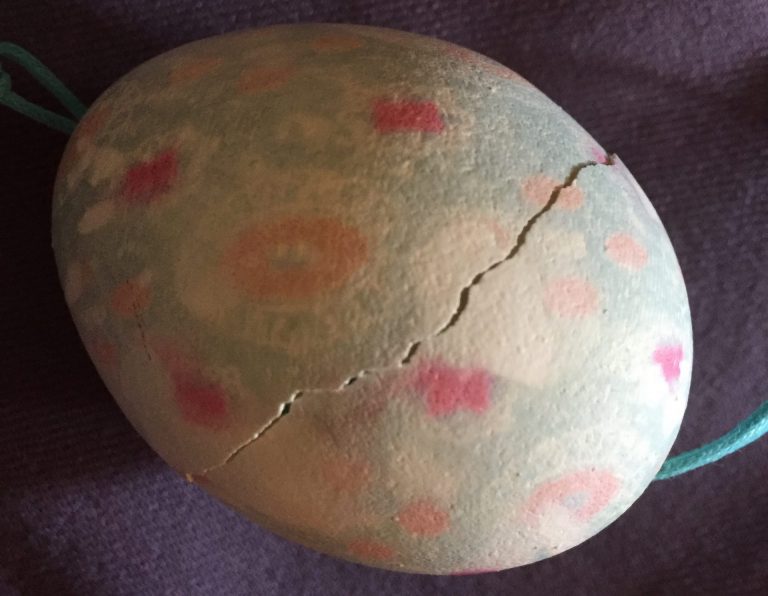Minding An Idea IV: Spring Cleaning
As winter fades and signs of spring and new life begin to appear, we have the opportunity to clear out the old and make space for the new to unfold. In any given moment, we can choose what we want to let go of or what we allow to die and choose what we want to nurture and grow. For many this shows up in the form of spring cleaning – getting rid of dirt and dust, on the surface and on a deeper level, and/or doing yard work – weeding flower and garden beds, turning over the soil and working in manure or compost to enrich the soil. It’s a fresh start, a tabula rasa or blank slate. Then we can plant seeds and nurture them through watering, weeding, providing support as needed, pruning and shaping. This cycle of intentional clearing, cleaning, preparing and creating can also be applied to habits and our own development as human beings.
A habit is a conditioned tendency or an embodied behavioral pattern that has been developed to serve some purpose through practice or repetition and reward or reinforcement. The habit may produce or maintain an identity (e.g., being a good student/partner/team player, “tough guy”, “get ‘er done gal”, etc.). We learn to do the things that result in giving us what we want: approval, belonging, love, food, a good feeling inside. As the poet David Whyte (1997) wrote:
We shape our selves/ to fit this world/ and by the world/ are shaped again.
Habits are wired into our nervous systems and bodies. This is why it’s difficult to make changes easily. A new habit takes awareness, intention, and practice – doing the same thing multiple times to “rewire” our systems so that it becomes easier, requires less energy, and becomes “second-nature” (so we don’t even have to think about it). Some habits embolden and empower us and move us towards our fullest expression as human beings, and some…. don’t. Some outlive their usefulness as we find ourselves in new situations, new relationships, new phases of our lives.
By becoming conscious of how we became who we are, we can wake up to the unfolding story of our own lives and see ourselves in a developmental framework. We can, in fact, become conscious of our own developmental process and can choose and greatly accelerate how we enter into it. By becoming more present, we begin to author our own story rather than living unconsciously in the story that we are only slowly waking up to.
- Doug Silsbee, Presence-Based Coaching, 2008, pp. 38-39
Rather than judging ourselves for holding onto those habits or continuing to do things that don’t serve our higher purpose, we can offer ourselves self-compassion…being grateful for the purposes that the habits have served. We can choose one habit to work with that we would like to let go of, shift, or replace with a more suitable habit. We can increase our awareness of what cues or triggers the habit, our response to it (with story, emotions, physical sensations, etc.), what identity we want to produce or protect (how we want to show up in the situation), and the routine or actions associated with the habit, as well as the outcome or reward that tends to reinforce the habit. Mindfulness plays a key role at different stops along the “habit loop” (Duhigg, 2014; Silsbee, 2008): “…paying attention in a particular way: on purpose, in the present moment, and nonjudgmentally” (Kabat-Zinn, 2017). For an entertaining example of observing one’s habit, see this short video (3:38) on “How to break habits” by New York Times author and reporter, Charles Duhigg:
For a helpful graphic of this process, visit: https://www.mindful.org/how-mindfulness-works-bread-bad-habits/
Once we have gotten to know our habit better and what we really want, we can interrupt the “habit loop” (Silsbee, 2008, pp. 63-64). We can recognize the cue or trigger, or our conditioned response to it, then reorganize ourselves around our desired outcome (this could be in the form of a purpose or commitment statement), identify alternative actions and choose one that is more appropriate and effective in the moment. Then the trick is to practice it – over and over again – so that our nervous system is rewired, the old habit doesn’t get practiced and gets extinguished, and the new response becomes a habit. And we are transformed, just like the wet leaves, packed and weed-filled dirt under the snow becomes a beautiful garden with intention, practice, and nurturing!
To experiment with spring cleaning your habits, try choosing one habit, one that is relatively easy to change. Take a week or two and just track your habit like a mindful detective. Notice the cue or trigger, your response (physical, emotional, etc.), the actions you take, and what happens next…as well as what you really want to have happen. Journaling is a great tool for self-monitoring in this way. Then try interrupting your habit intentionally by pausing when the habit cue shows up or you notice you are triggered and pause to reorganize yourself. Bring to mind your commitment or purpose and desired outcome, then identify alternatives and choose one that is more appropriate and effective in helping you get what you want. The more you practice a different response to the cue or trigger, the easier it becomes, until it becomes embodied or second nature. Understanding this simple habit loop and how to intervene in it is at the foundation of generating change. Happy Spring and new beginnings!
Resources
Brewer, Judson (2018). How mindfulness works to break bad habits. Posted March 15, 2018. Available at: https://www.mindful.org/how-mindfulness-works-bread-bad-habits/ with a helpful graphic by Heather Jones from Judson Brewer’s book (2018): The Craving Mind.
Duhigg, Charles (2014). The Power of Habit: Why We Do What We Do in Life and Business. New York, NY: Random House. Available in paperback, hardcover, Kindle, and audio versions at: https://www.amazon.com/Power-Habit-What-Life-Business/dp/081298160X/ref=sr_1_3?ie=UTF8&qid=1523127047&sr=8-3&keywords=the+power+of+habit
Kabat-Zinn, Jon (2017). Quoted in What is mindfulness? Explained (20 Definitions that clarify mindfulness). Available at: https://positivepsychologyprogram.com/category/mindfulness/
Silsbee, Doug (2008). Presence-Based Coaching: Cultivating Self-Generative Leaders Through Mind, Body, and Heart. San Francisco, CA: Jossey-Bass. Available in hardcover and Kindle versions at: https://www.amazon.com/Presence-Based-Coaching-Cultivating-Self-Generative-Leaders/dp/0470325097/ref=sr_1_3?ie=UTF8&qid=1523127269&sr=8-3&keywords=Doug+Silsbee
Whyte, David (1997). Working together. The House of Belonging. Vancouver, BC: Many Rivers Press/Banyen Books & Sound. Available in paperback at: https://www.amazon.com/House-Belonging-David-Whyte/dp/0962152439/ref=sr_1_1?s=books&ie=UTF8&qid=1523128583&sr=1-1&keywords=david+whyte+the+house+of+belonging








Pingback: SLOTHING AN IDEA - Entertaining An Idea
I really like it whenever people get together and share thoughts. Great website, continue the good work!
Great article, exactly what I was looking for.
Thanks for sharing Aventure